
Sewn in Memory: AIDS Quilt Panels from Central Illinois
- Duration:Temporary
- Location:Campbell Gallery
(date) 11/2/2021–7/10/2022
The People in the Panels
-
1. Pat Danen and Bobby Rodgers
Bobby Rodgers, an area native, farmed his family land near Ivesdale, Illinois. Patrick Danen moved here from Wisconsin and they became a couple in the 1970s. Pat started a furniture refinishing business in Mahomet, working closely with Ed Armbrust and Fred Maxheimer, who owned an antique business on the Mahomet Main Street. Bobby and Pat lived in Ivesdale until their deaths. Pat died first, followed in a short time by Bobby.
Panel made by their close friends Ed and Fred, who chose a folk art style to commemorate them. In addition to working in the antique business, Ed was a professor of entomology at the University of Illinois. Fred focused mostly on the business. He died of AIDS in 1988. Ed and Fred wrote Pat and Bobby “were some of our best friends. We partied together, traveled together, worked together, and, last but not least, we have all grieved together. They will be remembered as good kind men that were friends to many. We miss them very much.”
-
2. Mike [last name unknown]
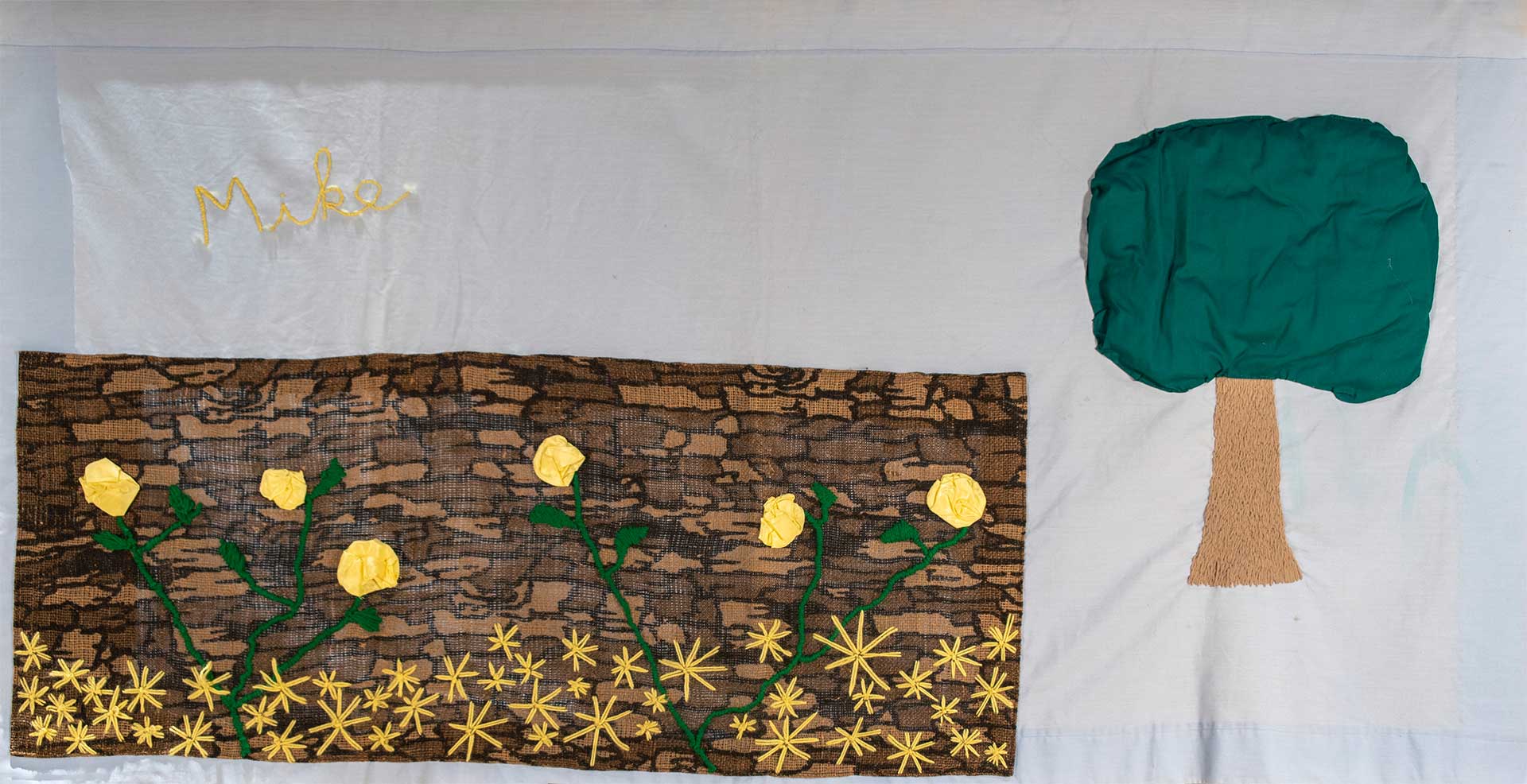
The exhibit team has not found any information about the person this panel commemorates. Stories about specific individuals during the HIV/AIDS crisis of the 1980s and early 1990s can be hard to find for many reasons.
- Friends, family, and/or the makers may no longer be in the area or may be deceased as well.
- The histories might not have been recorded at the time because they felt too sad or because of stigma surrounding HIV/AIDS.
Research about these quilt panels is ongoing, and we would love to be able to share more of Mike’s story. If you have information about the people who are commemorated or who created the panels, please email spurlock-museum@illinois.edu email link.
-
3. Stephen Gallagher
Steve was born in Iowa and moved to Champaign in the late 1970s. He became involved with GCAP in 1986 and was the primary Buddy to Mike Hyman, as well as the organization’s administrative assistant. At GCAP, he helped write grant requests, counseled newly diagnosed persons, and helped keep the speaker’s bureau up to date with his voracious reading. In 1990, he earned a Bachelor’s of Social Work from the University of Illinois and was working on his graduate degree at the time of his death.
Panel made by Jerry Carden, Steve Otto, and others.
-
4. David K. French (1950–1994)
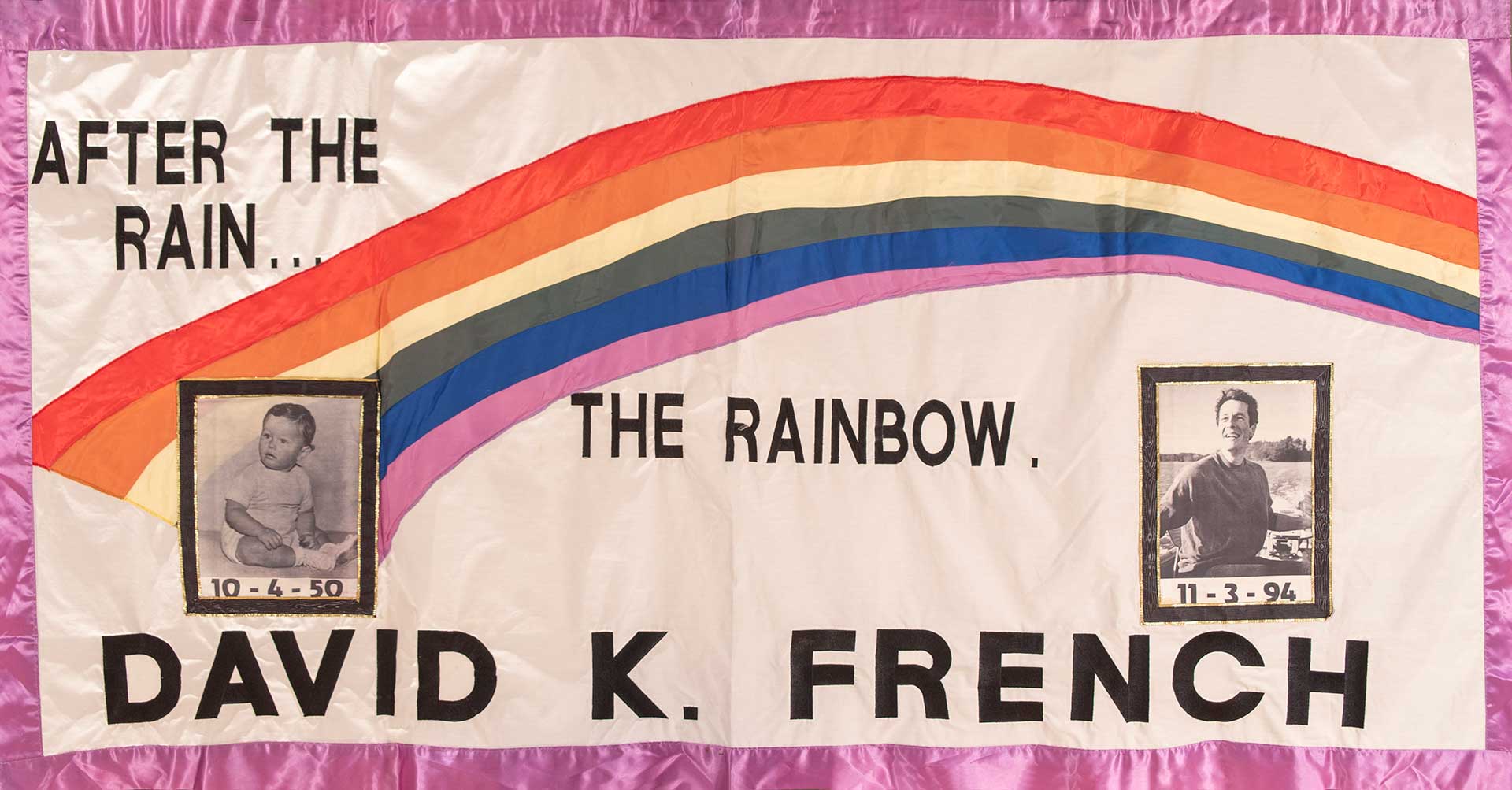
David was born in Hillsboro and later lived in Paris and St. Joseph, Illinois. He attended Southern Illinois University and worked at Kennedy's Restaurant in Urbana. He was an active member of GCAP.
-
5. Dr. Ronald Steinhoff (1962–1997)
Ron Steinhoff-Thorton was a student in the Medical Scholars (MD/PhD) program at the University of Illinois. He came to Champaign-Urbana in 1990 and completed a PhD degree in Community Health. He was participating in the medical school portion of the program at the time of his death in 1996. Originally from West Germany, Ron returned to Germany towards the end of his life in order to have better access to health care. He was a child prodigy pianist. His partner Marcus was also a graduate student on campus.
Panel made by Nora Few, Niranjan Karnik, and Jim Hall.
-
6. John Morgan (1965–1991)
John was a missile technician and the vice chair of GCAP. He initiated the GCAP purchase of an expensive machine to administer monthly aerolized pentamadine (used to treat pneumocystis pneumonia), with the machine loaned among those using the medicine. He helped with the beginning phrases of remodeling Champaign House, GCAP’s bedroom transitional housing facility for people living with HIV who are experiencing homelessness. He believed so deeply in Champaign House that in his will he left $5,000 to help with its completion.
-
7. Benji Fortney (1951–1989)
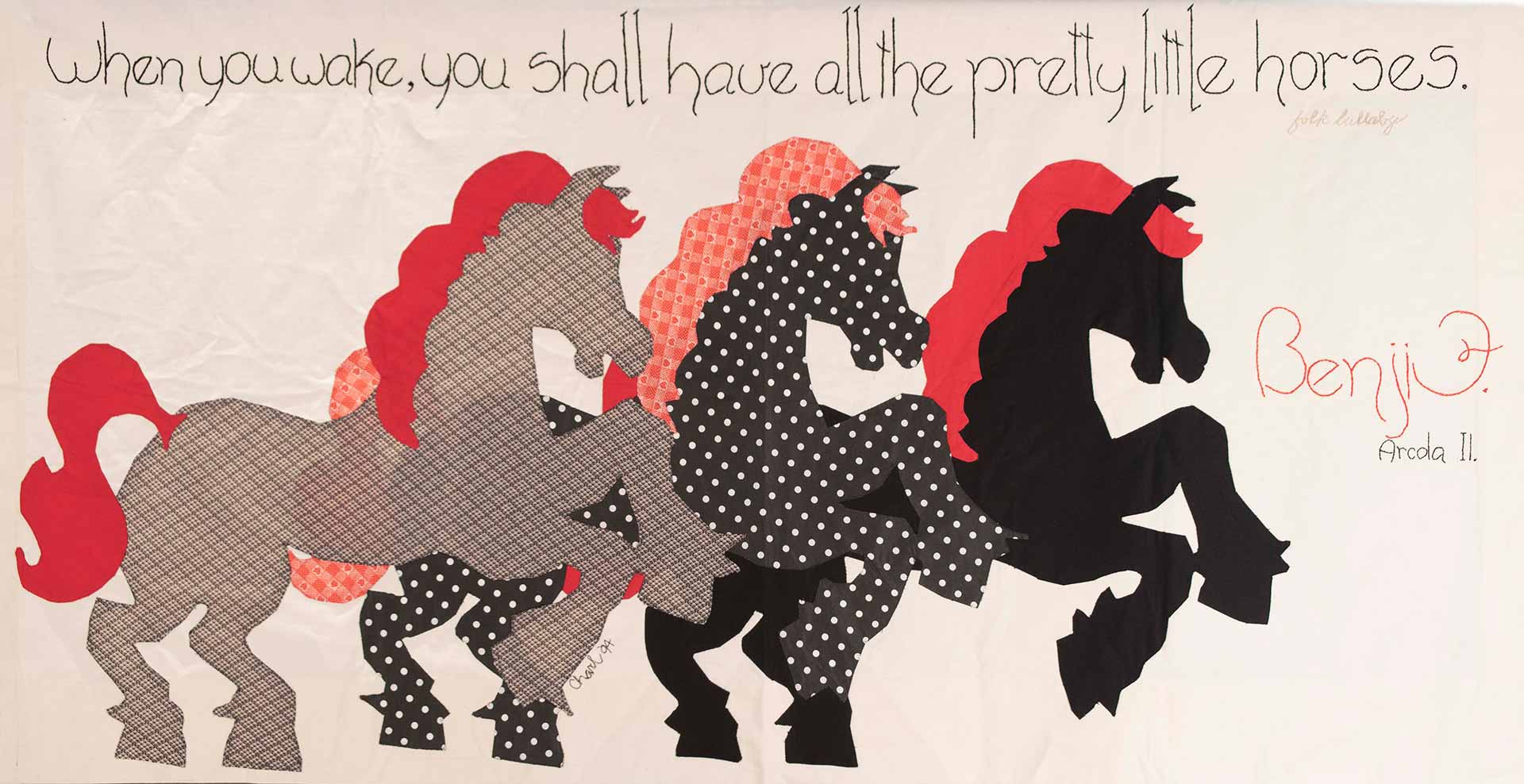
Benji grew up in Arcola, where he graduated from high school in 1969. He worked as a landscaper.
-
8. Chuck Harshbarger
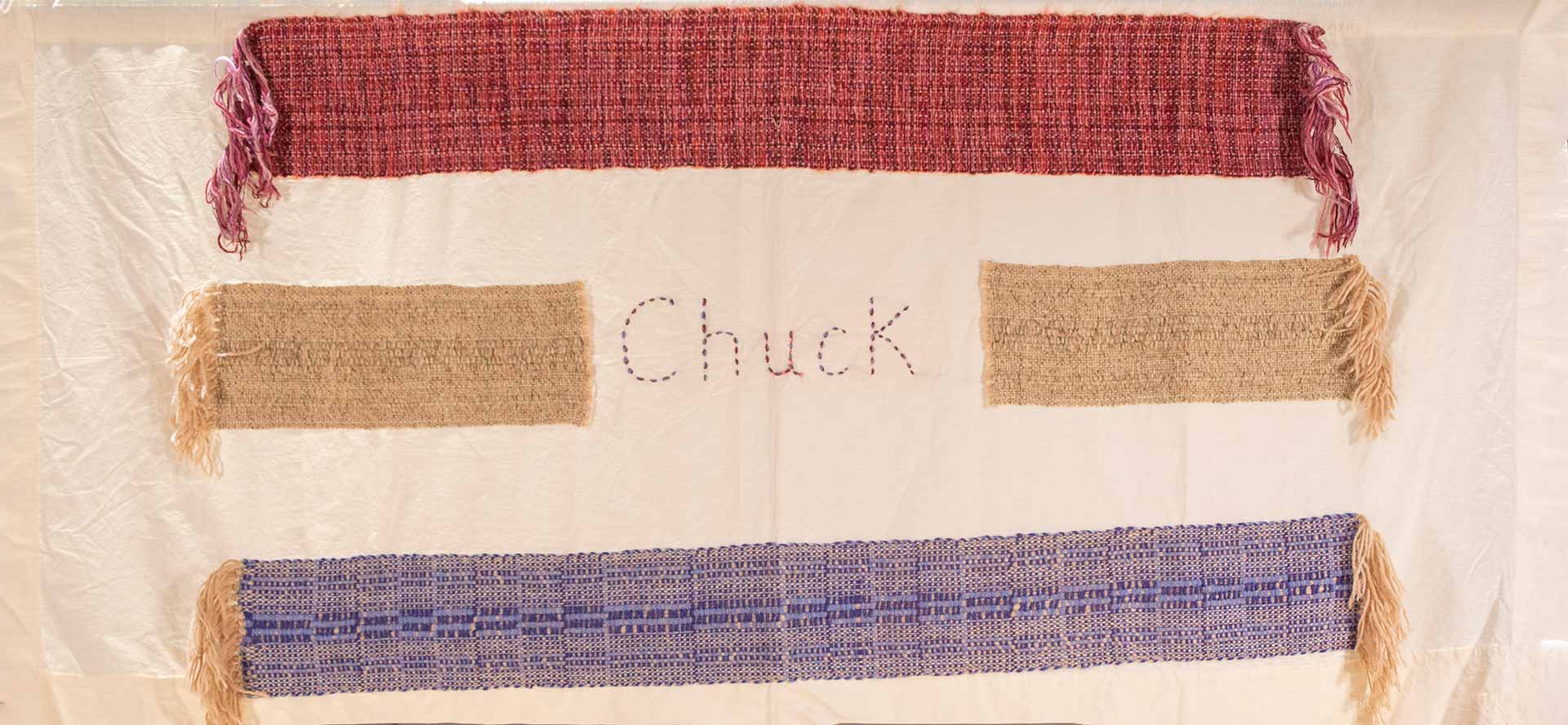
A 1988 News-Gazette article about volunteers making AIDS quilt panels for local people quotes someone who knew Chuck and helped design his panel: “Chuck was always there, sometimes with a place to stay, sometimes to help find a job... So this is something we can do to be there for him.”
Panel made by Kari Alice Lynn, Thom Baxley, and a local volunteer quilt panel team.
-
9. Bob Smith (1945–1990)
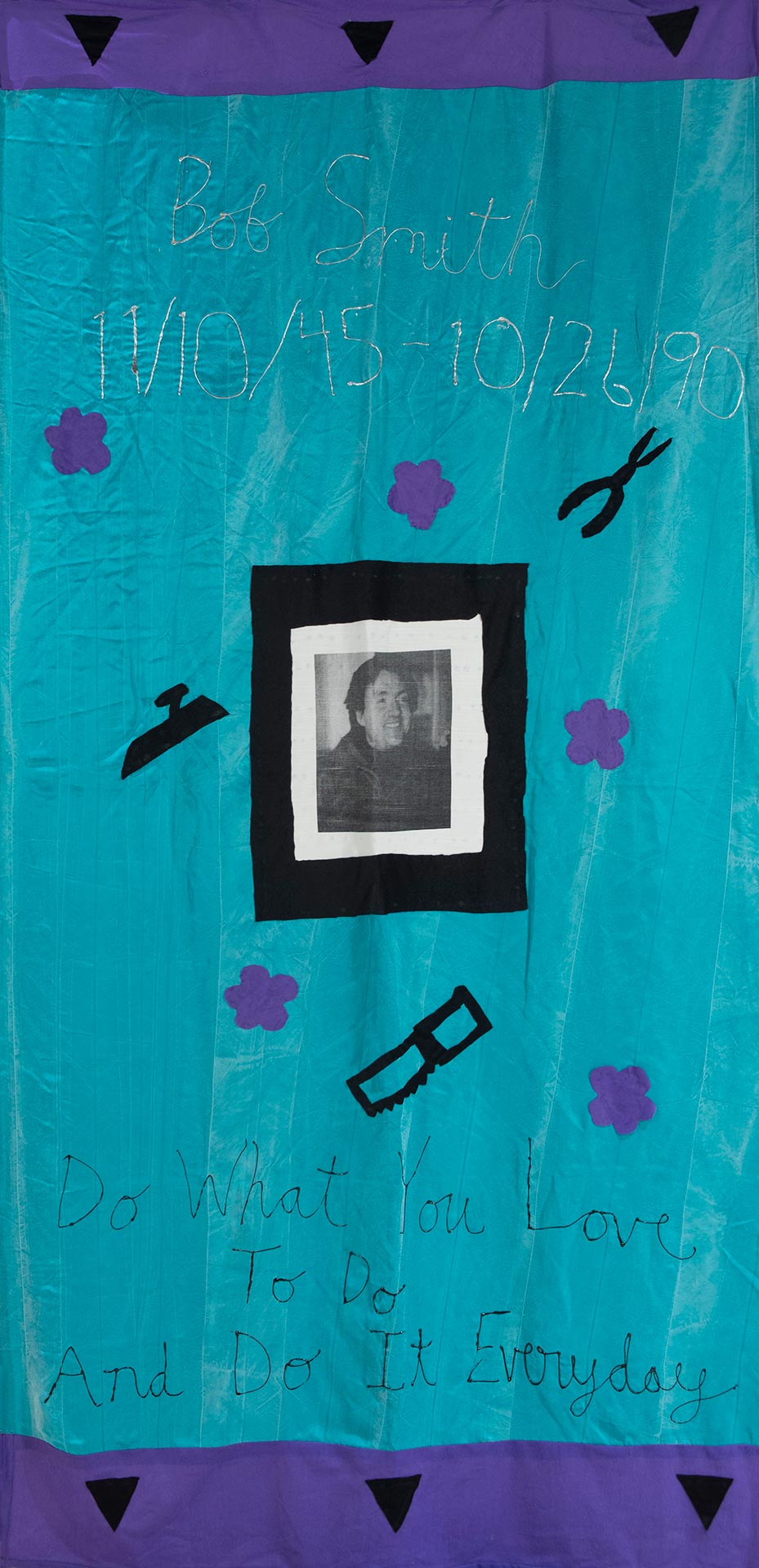
The exhibit team has not found any information about the person this panel commemorates. Stories about specific individuals during the HIV/AIDS crisis of the 1980s and early 1990s can be hard to find for many reasons.
- Friends, family, and/or the makers may no longer be in the area or may be deceased as well.
- The histories might not have been recorded at the time because they felt too sad or because of stigma surrounding HIV/AIDS.
Research about these quilt panels is ongoing, and we would love to be able to share more of Bob’s story. If you have information about the people who are commemorated or who created the panels, please email spurlock-museum@illinois.edu email link.
-
10. Scott Ford (1957–1988)
Scott was born in Chicago and graduated from the University of Illinois in 1984 with a degree in Landscape Architecture. In college, he met his partner Greg, who was with him until he died. After Scott’s graduation, they moved to Oakland, California, where Greg attended Berkeley. Scott became a master gardener for Oakland Parks Department. After being diagnosed with AIDS in 1988, Scott participated in treatment with AZT, but it caused severe anemia and he discontinued the drug. According to his obituary in the GCAP newsletter, he requested no heroic measures be taken to save his life. Greg died the next year. One of his friends remembers Scott as “first and foremost an extremely kind, unfailingly generous, and wickedly funny man!”
-
11. Donald (Devin) Carrington (1962–1990)
Devin grew up in the Deland and Monticello area. At 17, he moved to California, where he studied cosmetology in Riverside and earned his GED. He worked as a cosmetologist and part-time bartender. He was living in California at the time of his HIV diagnosis, then moved back to central Illinois. Said a friend, “Don knew his truth. During the last months of his life, and up to the day of his death, he spent time caring for others, worrying about their wellbeing, and loving all who knew him. He always made sure that his loved ones were taken care of before thinking of himself.”
Devin was very active in the Buddies Project with his mother Geneva Carrington. The Buddies Project was a support group that met twice a month to discuss collective issues, as well as provide transportation, companionship, housekeeping, food preparation, respite care, and other services for persons with AIDS and their support networks. The Buddy Project had volunteers from within and beyond the LGBTQ+ community.
Fly Away
I guess I have to go;
it’s time to close my eyes and
fly away.
Fly away to a place where
I will know peace.
A place where I can be
strong again as I once was.
My mind and body are in
sorry shape, but my flight
will mend and purify both.
And I will be happy again.
Oh, happy days! A poem written by Devin on June 14, 1990, 6 days before he died -
12. Mike Hyman (1947–1987)
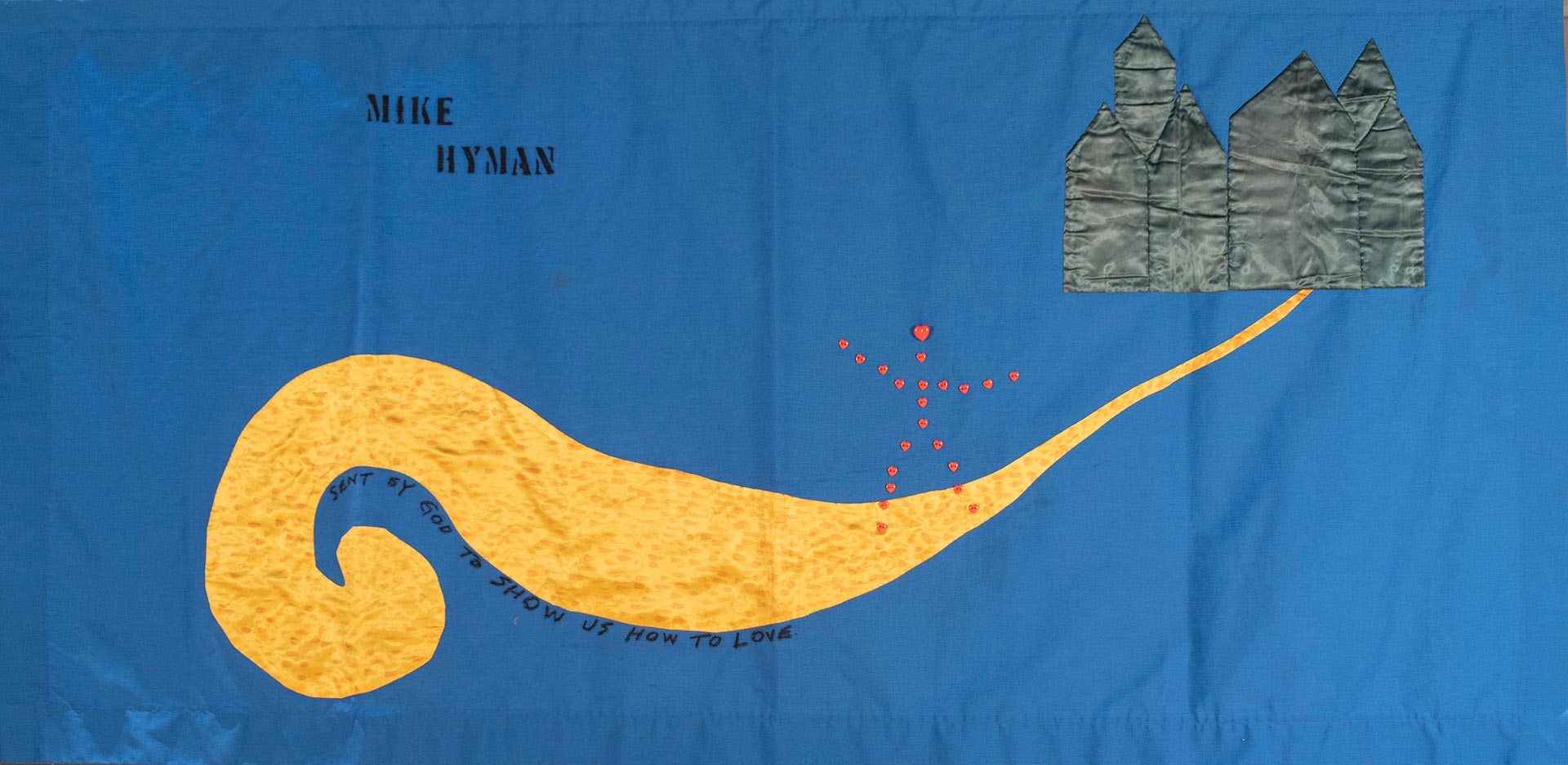
Mike was born in Ohio and had a long career in banking, including as vice president of the Bank of Rantoul. He also served in the armed forces in the 1970s. He lived for almost 2 years after contracting HIV and took part in a study for the then-experimental drug azidothymidine (AZT). His obituary in The News-Gazette describes him as “shunned by some in Rantoul in Champaign [but] he never cut himself off from society.” His approach to dealing with AIDS has been commemorated with a Memorial Award for lifetime service to GCAP. Another newspaper article quotes a friend: “Mike was always saying ‘I’m off to the big city’ like Dorothy,” referring to The Wizard of Oz.
Panel made by Stephen Gallagher.
-
13. Merrill Eskew (1945–1992)
Merrill was born in Iowa, where he also graduated from high school and college. He was a veteran of the Vietnam War and also an air traffic controller.He married and had two children before divorcing amicably and maintaining a deep friendship with his ex-wife. He moved to CU where he and Jerry Wray were in a relationship together. His love of reading and books led to their purchase and operation of the Little Professor Book Center on Green Street in Champaign’s campus town. He loved vintage cars, old movies, concerts and weekends with his kids.
Panel made by Merrill’s family: his niece painted the car, and his sisters had the concept of the book for family and friends to write their thoughts.
-
14. Paco (Paul David) Arbogast (1955–1986)
Paco served in the Air Force and later tended bar at 35 East and the Moonlighter, whose logo is in the panel. A very similar version of this panel is in the national quilt and includes a button from the bar and the words “Champaign, Illinois.”Paco moved to Florida in later years, and there he received foreboding news from doctors about his condition. At the time of his death, he had started to go blind. Paco is remembered with great love by many people in town. “The biggest thing I remember about Paco is his joy,” says one. “He was always there with a smile when you were sad.”
Panel made by Ed Lisowski, who says “I thought he was an angel, from his smile and his radiance.”
-
15. Michael Kindred (1952–1992)
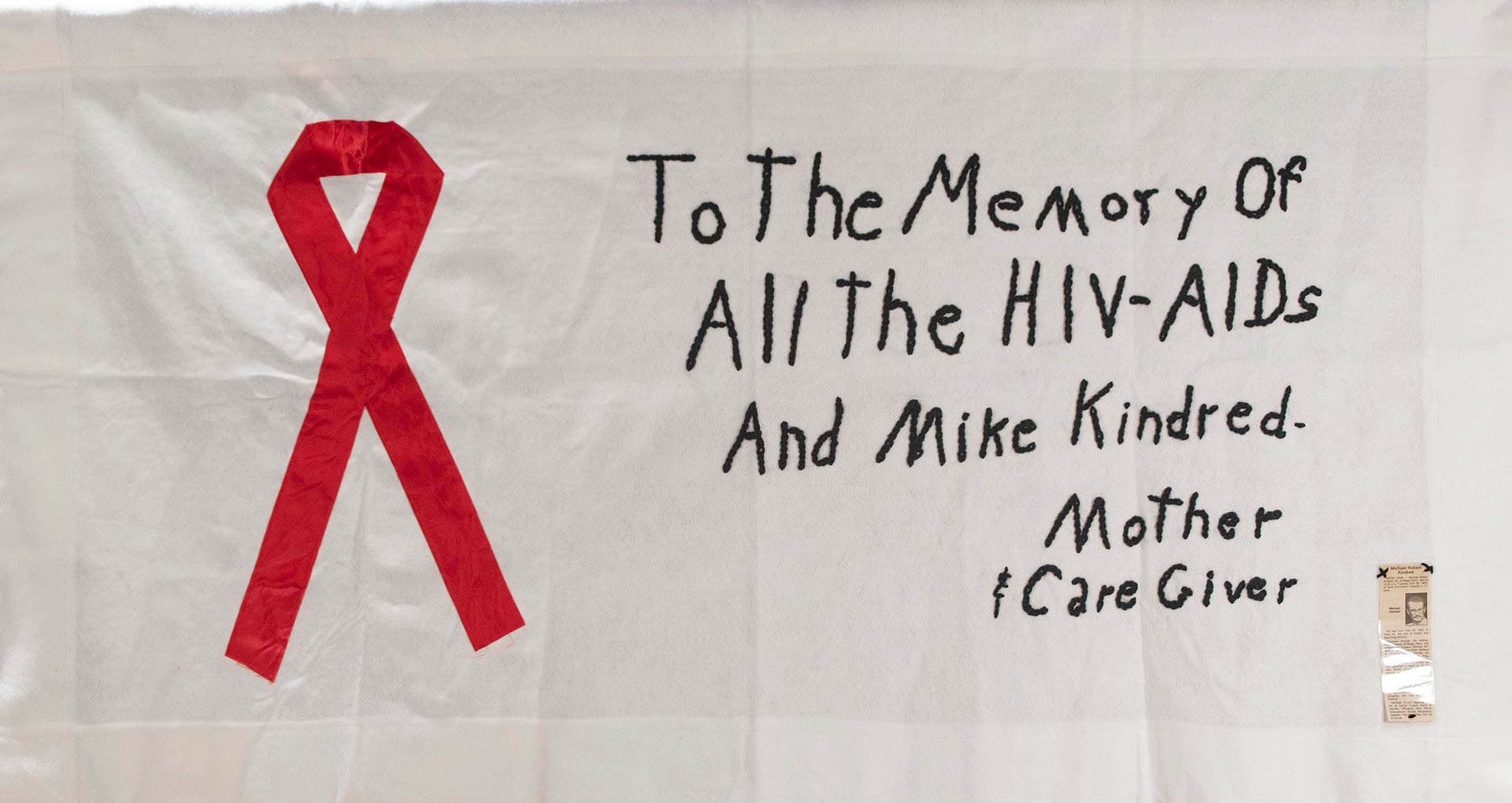
Mike grew up in the Ridge Farm area in Vermilion County. He was the Director of the Danville Community Action Energy Assistance Department. He was very active with AIDS education efforts and GCAP’s AIDS Buddy Project. His last wish was to go on a bus trip to see the AIDS quilt display at the National Mall in Washington DC, and his mother and friends made sure that happened.
Panel made by Alice Edwards, Mike’s mother. Alice helped make panels for others as well. In a 1994 News-Gazette article, she says “If you live through AIDS, you know that it can’t be denied. Some of these panels are especially for the fellas whose parents are still denying what’s happening to them... There are still people who shun me because my son died of AIDS. If [seeing the quilt panels] helps make even one person more aware or more considerate, then it’s served its purpose.”
-
16. Grant Granger
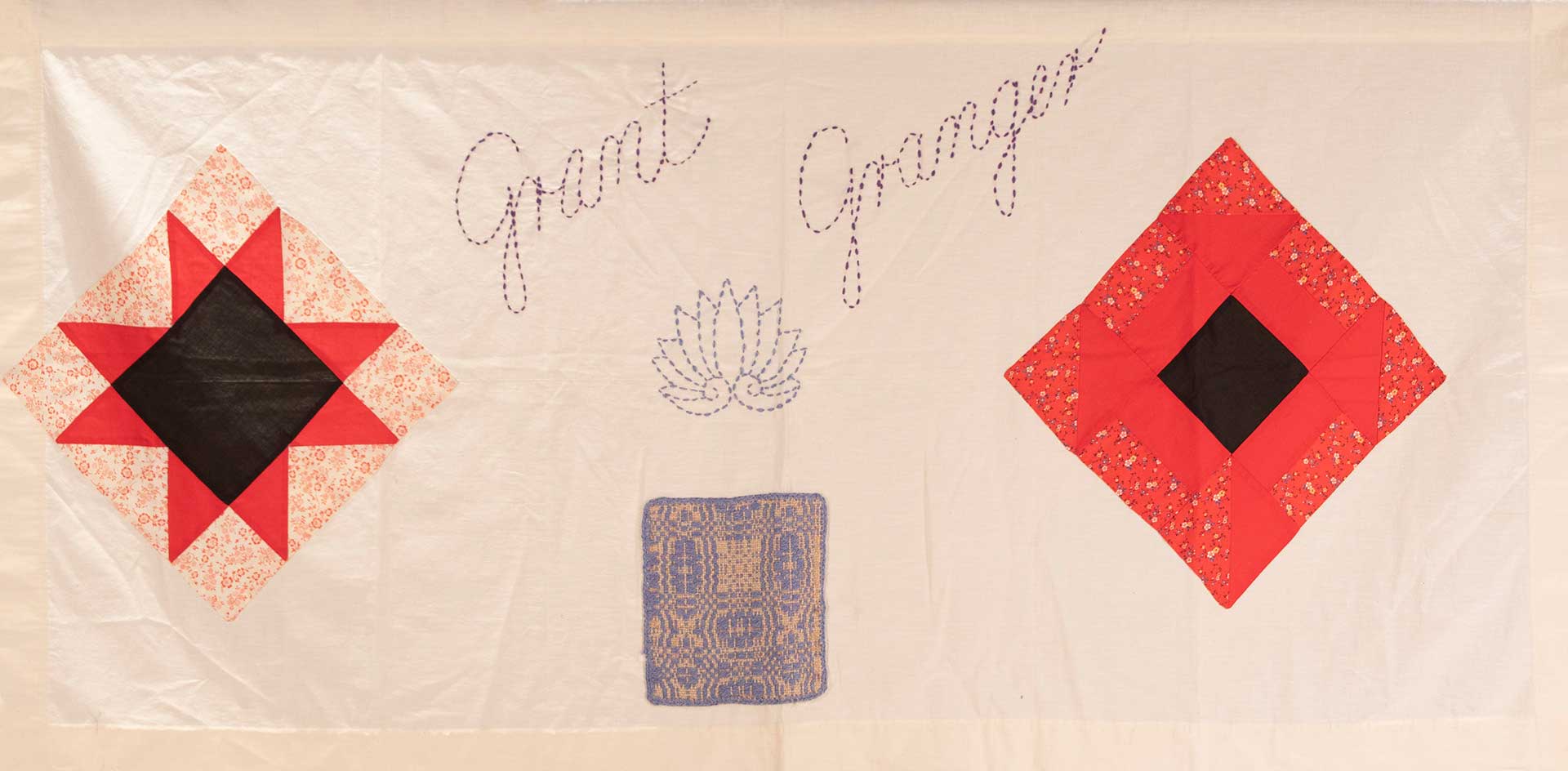
According to a 1988 News-Gazette article, this panel was made by a professional weaver, Kari Alice Lynn, who did not know Grant. “All I can bring to this panel is to try to create something that would be pleasing to him if he could see it.” The article describes the panel as “more political” than some others: “scarlet and black [shapes] cut from older quilts conjure up images of struggle; the triangles represent the pink badges worn by homosexuals in Nazi concentration camps... Images of flowers and blossoming affirm life. Because she never knew anybody with AIDS, the artist says, she has tried to compensate with professionalism and attention to detail.”
Panel made by Kari Alice Lynn.
-
17. Greg Downey (1960–1990)
Greg was born locally and went to school in Monticello. He graduated from Illinois State University with an information technology degree, then moved to Louisville to work as a system programmer for the city. After contracting HIV, Greg’s parents took turns staying with him in Kentucky, and later he moved back to central Illinois so they could care for him at home. Greg really wanted to see the national AIDS quilt at McCormick Place in Chicago in 1990, so he and his family went. He died 4 days later. He asked his parents to stay involved in HIV/AIDS support and education. They also established an art scholarship to honor his love of art.
Panel made by Greg’s mother, Georgia King.
-
18. Ruben [last name withheld] (1963–1990)
The makers of this panel shared moving words about Ruben’s life. This label quotes their historic document directly.
“Ruben died homeless, living the last year of his life at shelters and on the streets of Champaign-Urbana.
Ruben denied his illness and refused treatment. Ruben also had a mental illness, which had much to do with his homelessness and ability to understand how best to care for himself. The door represents all the doors that were shut to him.
Ruben could be full of energy and life despite his trouble. He often spoke of dressing [in] drag, for which he had a talent. He talked of going to Trinidad as if it were a paradise. His Trinidad was in Colorado, however, where he hoped to gain peace with a sex change operation. The dress sewn onto the panel symbolizes this side of Ruben.
Ruben’s favorite hobby was writing lyrics and collecting 45s, which he played for hours at a time. Even when he did not have a home, he carried notebooks full of his lyrics around with him. The music notes represent this aspect of his life. Ruben spent years of his life in prison.... He was sentenced to 3 years in prison for stealing food to eat when he was homeless. Ruben seemed different after this occurred—less full of life, more to himself. And then he was sick and we all lost Ruben.
Ruben’s last name is not used as his family has not given their permission.”
Panel made by Oliver Bell, Tia Simms, and Fred Fearday.
-
19. Scott Hubbard (1949–1992)
Scott was a graduate of Urbana High School and Parkland College. He was a deputy for the Champaign County Sheriff’s Department for 17 years.
Stories Untold
For 16 weeks during the fall of 2021, 12 students from the University of Illinois College of Media worked with Stretch Ledford (Department of Journalism) and Kimberlie Kranich (Illinois Public Media) to research and produce biographies of the men commemorated in Spurlock Museum's "Sewn in Memory: AIDS Quilt Panels from Central Illinois" exhibit. The students produced 11 short films but were unable to find enough content for the eight other quilt panels on display in the exhibit. These men's stories remain untold.